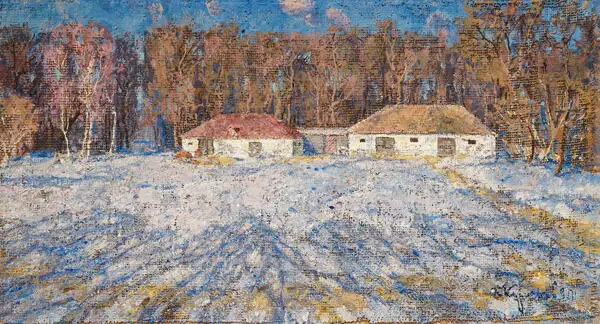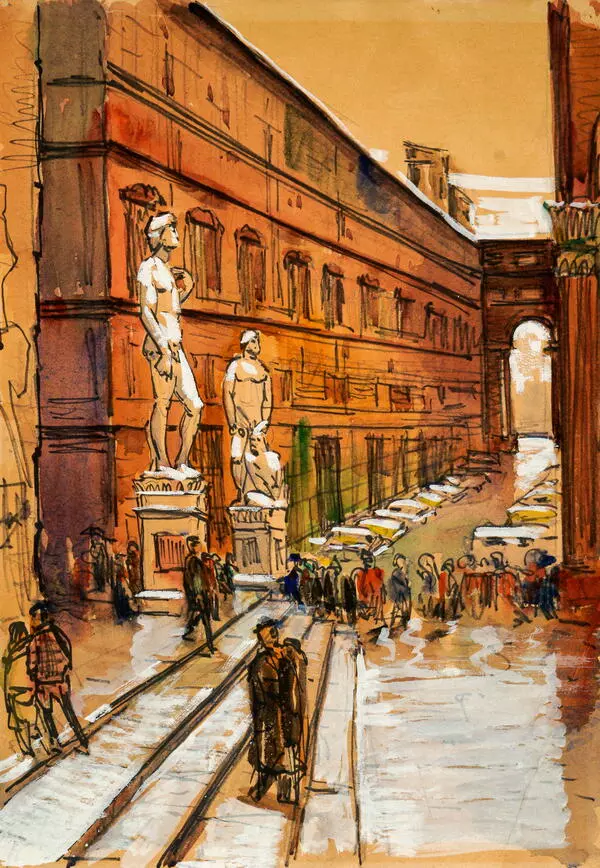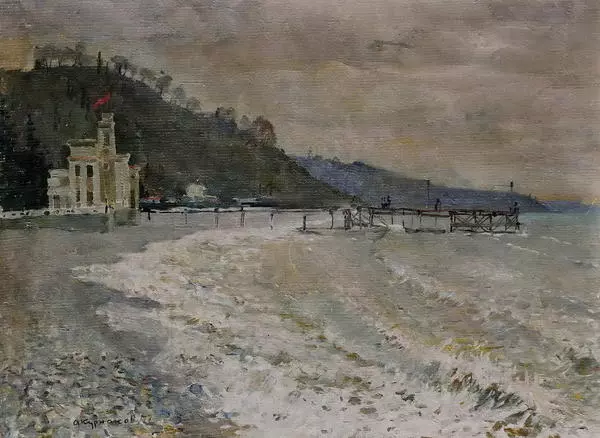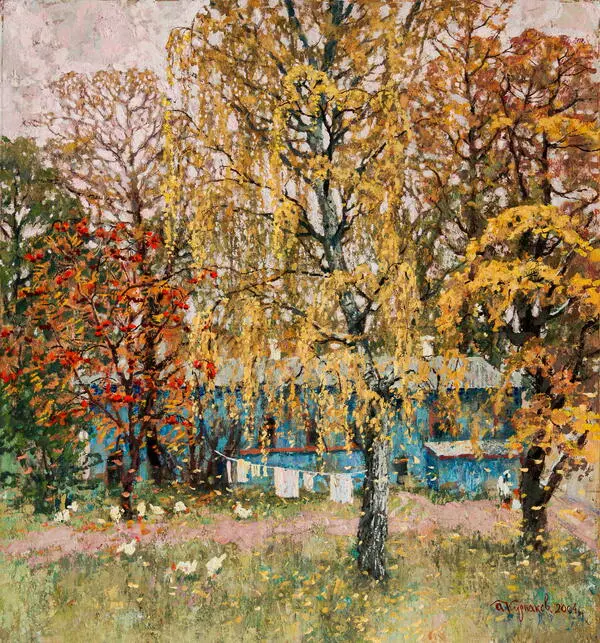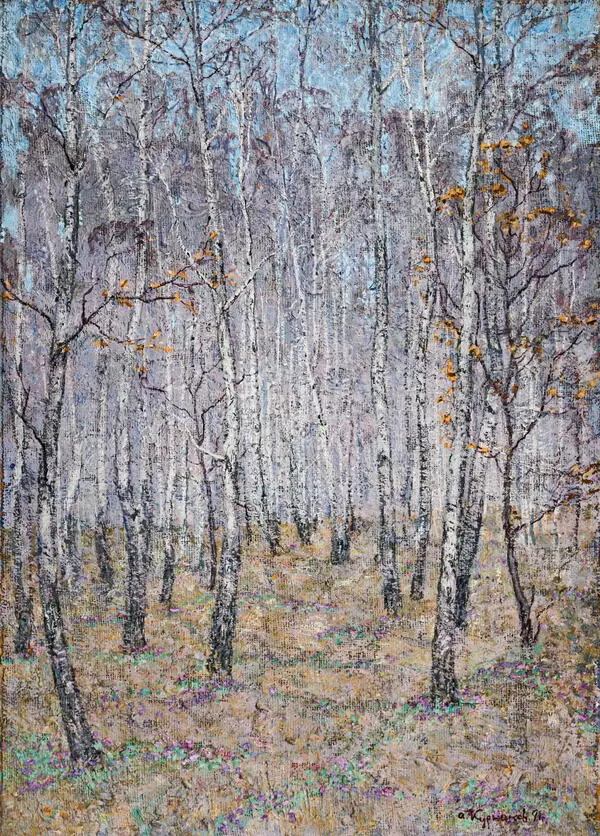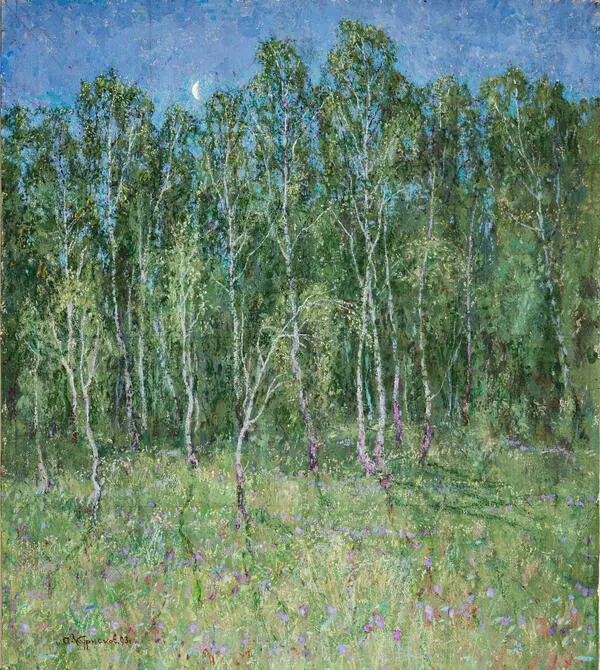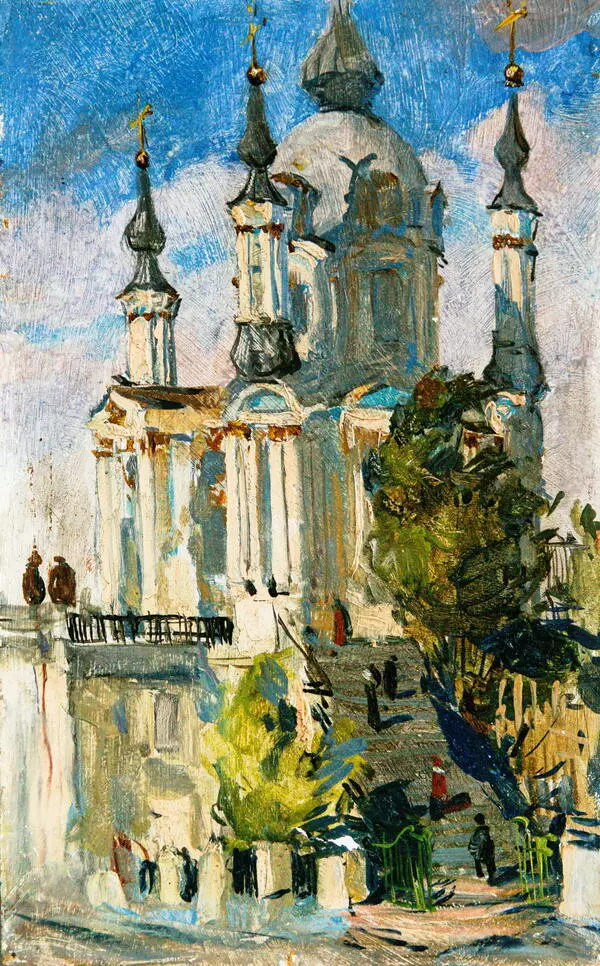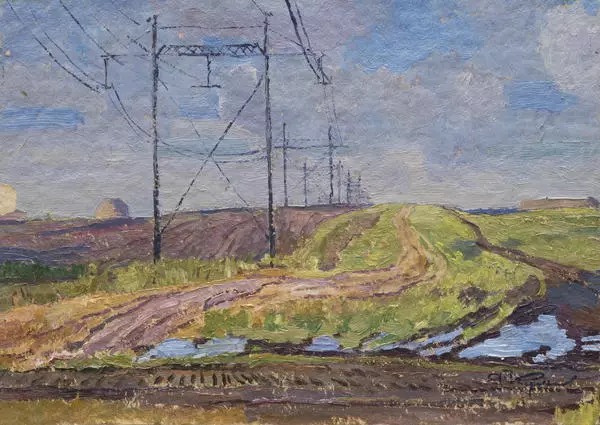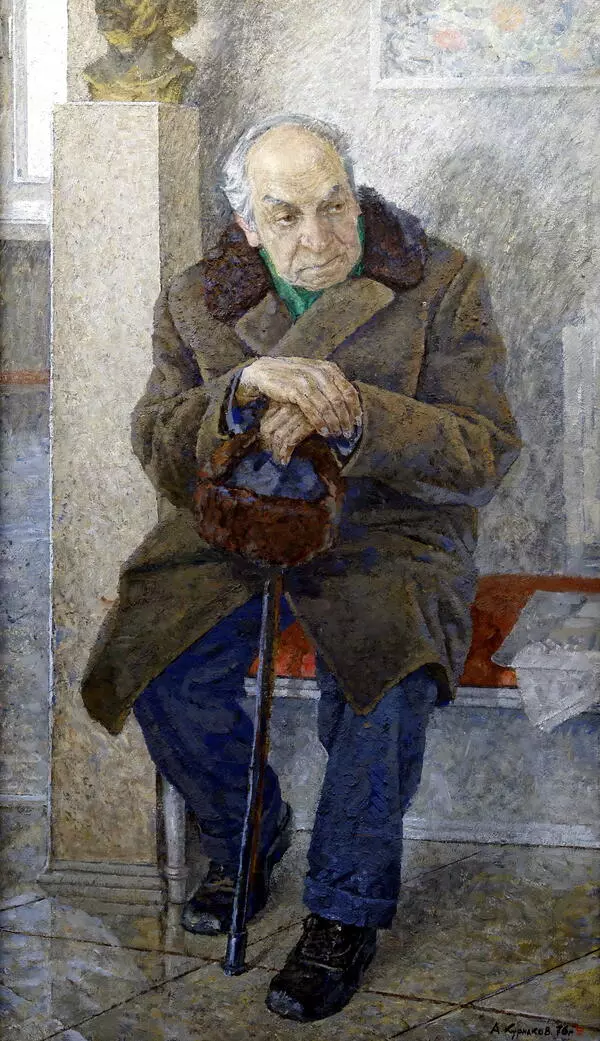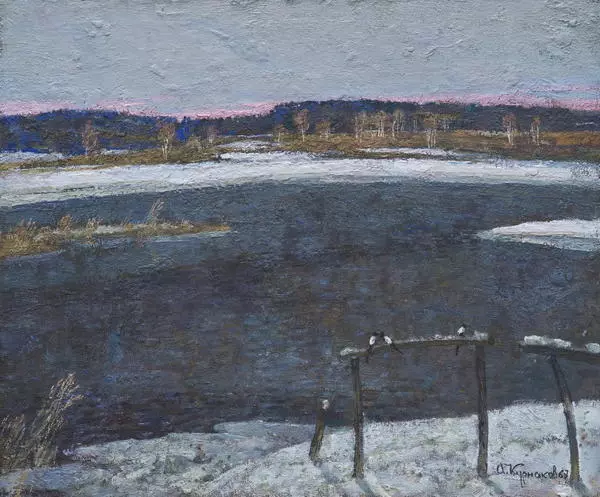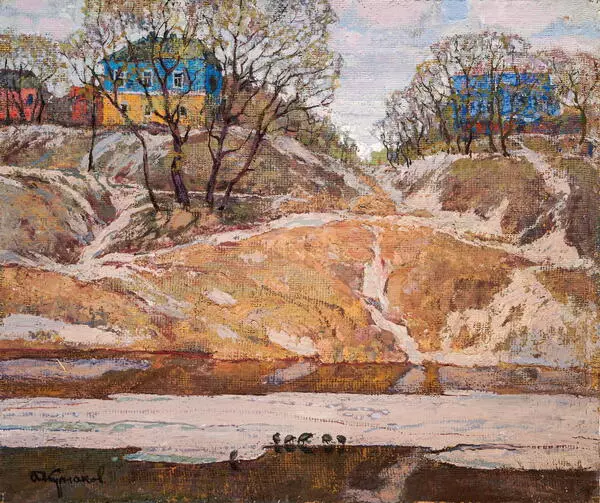The People’s Artist of the USSR Andrey Ilyich Kurnakov received many honorary titles and insignia. He was a professor, a member of the Russian Academy of Arts, the winner of the State Prize named after Ilya Repin, and a veteran of the Great Patriotic War. His self-portrait is the hallmark of the museum, and it is located in one of the main rooms of the painter’s studio, which is aimed at preserving the memory of him.
In 1983, the city gave Kurnakov the house, where the museum is located nowadays. This is the place where the painter could be alone with his thoughts, process various emotions, and create his works. By this time, Kurnakov had already established himself as a renowned painter and a talented teacher.
The main feature of Kurnakov’s work is the synthesis of people and nature. It can be traced in most of his works, whether that be a landscape, images of other people, or self-portraits. The latter were not a rare occurrence — eight self-portraits of Kurnakov are exhibited in the memorial studio alone. The most famous one of them, created in 1985, is also the most insightful, reflecting the very personality of the artist.
The difference between this self-portrait and the others is that the artist depicted himself against the backdrop of a winter landscape, working in the open air, while usually the background of the paintings in this series was blurred to best emphasize the person being portrayed. The overall coloring of the work is cold with that grayish-white of a cloudy day. Occasional thaw patches in the snow, sprinkled with pinkish specks from the sun hidden behind the clouds, hint at the approaching spring.
Art critics draw parallels between the season in the painting and the historical period in the country. The mid-1980s were the beginning of perestroika. The whole country was seething, with newspapers, news programs, and talk shows with various political figures on TV becoming the primary source of information. Each Soviet person had to decide which side to take.
This problem was also relevant for Kurnakov. He was a communist, a frontline soldier, and a well-known public figure in the region who had just started working on a large-scale diorama about the Russian Civil War, where the question “Which Russia do you choose?” was especially acute.
The man in the portrait looks straight into the eyes of the viewer as if demanding to make an important decision. He also seems to be asking himself first. The winter landscape symbolizes the overwhelming emotions he experiences. And yet, an optimist by nature, Kurnakov radiates his hope for the best while doing what he loves against the backdrop of the coming spring.
In 1983, the city gave Kurnakov the house, where the museum is located nowadays. This is the place where the painter could be alone with his thoughts, process various emotions, and create his works. By this time, Kurnakov had already established himself as a renowned painter and a talented teacher.
The main feature of Kurnakov’s work is the synthesis of people and nature. It can be traced in most of his works, whether that be a landscape, images of other people, or self-portraits. The latter were not a rare occurrence — eight self-portraits of Kurnakov are exhibited in the memorial studio alone. The most famous one of them, created in 1985, is also the most insightful, reflecting the very personality of the artist.
The difference between this self-portrait and the others is that the artist depicted himself against the backdrop of a winter landscape, working in the open air, while usually the background of the paintings in this series was blurred to best emphasize the person being portrayed. The overall coloring of the work is cold with that grayish-white of a cloudy day. Occasional thaw patches in the snow, sprinkled with pinkish specks from the sun hidden behind the clouds, hint at the approaching spring.
Art critics draw parallels between the season in the painting and the historical period in the country. The mid-1980s were the beginning of perestroika. The whole country was seething, with newspapers, news programs, and talk shows with various political figures on TV becoming the primary source of information. Each Soviet person had to decide which side to take.
This problem was also relevant for Kurnakov. He was a communist, a frontline soldier, and a well-known public figure in the region who had just started working on a large-scale diorama about the Russian Civil War, where the question “Which Russia do you choose?” was especially acute.
The man in the portrait looks straight into the eyes of the viewer as if demanding to make an important decision. He also seems to be asking himself first. The winter landscape symbolizes the overwhelming emotions he experiences. And yet, an optimist by nature, Kurnakov radiates his hope for the best while doing what he loves against the backdrop of the coming spring.




